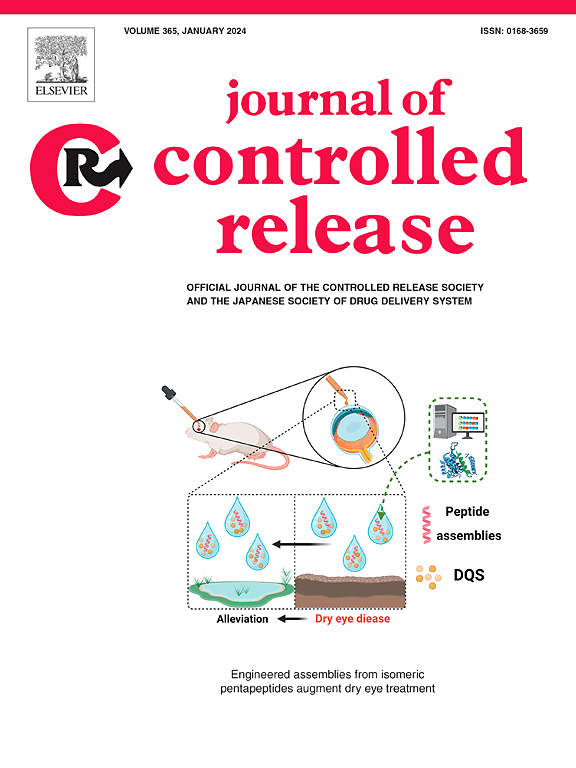Extracellular vesicle as a next-generation drug delivery platform for rheumatoid arthritis therapy
IF 10.5
1区 医学
Q1 CHEMISTRY, MULTIDISCIPLINARY
引用次数: 0
Abstract
Rheumatoid arthritis (RA) is a systemic autoimmune disorder characterized by chronic inflammation and progressive damage to connective tissue. It is driven by dysregulated cellular homeostasis, often leading to autoimmune destruction and permanent disability in severe cases. Over the past decade, various drug delivery systems have been developed to enable targeted therapies for disease prevention, reduction, or suppression. As an emerging therapeutic platform, extracellular vesicles (EVs) offer several advantages over conventional drug delivery systems, including biocompatibility and low immunogenicity. Consequently, an increasing number of studies have explored EV-based delivery systems in the treatment of RA, leveraging their natural ability to evade phagocytosis, prolong in vivo half-life, and minimize the immunogenicity of therapeutic agents. In this review, we first provide an in-depth overview of the pathogenesis of RA and the current treatment landscape. We then discuss the classification and biological properties of EVs, their potential therapeutic mechanisms, and the latest advancements in EVs as drug delivery platforms for RA therapy. We emphasize the significance of EVs as carriers in RA treatment and their potential to revolutionize therapeutic strategies. Furthermore, we examine key technological innovations and the future trajectory of EV research, focusing on the challenges and opportunities in translating these platforms into clinical practice. Our discussion aims to offer a comprehensive understanding of the current state and future prospects of EV-based therapeutics in RA.


求助全文
约1分钟内获得全文
求助全文
来源期刊

Journal of Controlled Release
医学-化学综合
CiteScore
18.50
自引率
5.60%
发文量
700
审稿时长
39 days
期刊介绍:
The Journal of Controlled Release (JCR) proudly serves as the Official Journal of the Controlled Release Society and the Japan Society of Drug Delivery System.
Dedicated to the broad field of delivery science and technology, JCR publishes high-quality research articles covering drug delivery systems and all facets of formulations. This includes the physicochemical and biological properties of drugs, design and characterization of dosage forms, release mechanisms, in vivo testing, and formulation research and development across pharmaceutical, diagnostic, agricultural, environmental, cosmetic, and food industries.
Priority is given to manuscripts that contribute to the fundamental understanding of principles or demonstrate the advantages of novel technologies in terms of safety and efficacy over current clinical standards. JCR strives to be a leading platform for advancements in delivery science and technology.
 求助内容:
求助内容: 应助结果提醒方式:
应助结果提醒方式:


